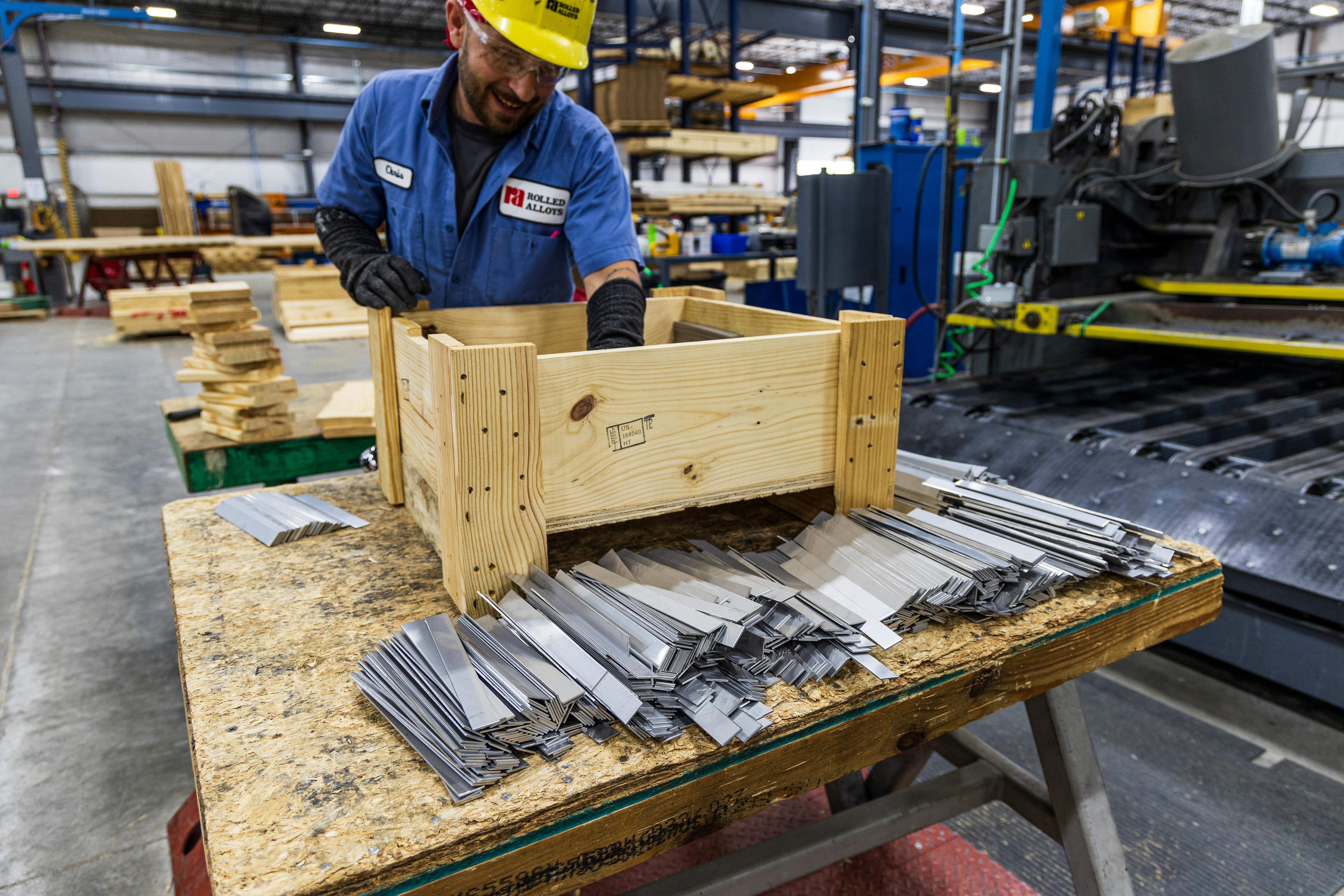
Boost Manufacturing Productivity
10 Tips to Enhance Manufacturing Productivity
By: Destiny Dickerson and Tykechia Dickerson
Productivity is the cornerstone of success in the fast-paced and highly competitive manufacturing world. Higher productivity means more output, improved quality, reduced costs, and better customer satisfaction, leading to greater profitability and growth.
However, enhancing productivity isn’t just about working faster. It’s about working smarter. Numerous strategies, from leveraging modern technologies to optimizing workflows and investing in your workforce, can help manufacturers stay ahead of the curve.
Here are 10 practical tips to help you elevate manufacturing productivity and create a more agile, efficient, and resilient production environment.
1. Invest in Employee Training and Development
Employees are the backbone of any manufacturing operation. Even the most advanced technology cannot deliver results without a well-trained workforce to operate and manage it. Ongoing training ensures that your employees are competent and confident in using machinery, understanding safety procedures, and applying lean practices.
Encourage cross-training to give your team flexibility and reduce dependency on specific individuals. Empower employees to contribute ideas for improving processes—after all, those closest to the work often have the best insights into how to improve it.
2. Embrace Lean Manufacturing Principles
Lean manufacturing focuses on eliminating waste and improving flow across the production process. Common types of waste include overproduction, waiting time, unnecessary transportation, excess inventory, and defects.
Implementing lean tools such as 5S (Sort, Set in order, Shine, Standardize, Sustain), Kaizen (continuous improvement), and value stream mapping can significantly streamline operations. Manufacturers can increase efficiency and responsiveness by continuously identifying and removing non-value-added activities.
3. Automate Repetitive and High-Risk Tasks
Automation has become an essential tool in boosting manufacturing productivity. By automating repetitive, labor-intensive, or hazardous tasks, companies can reduce human error, increase output speed, and free up employees for higher-value responsibilities.
This doesn’t always mean expensive robotics. Even basic programmable logic controllers (PLCs), sensors, and simple machines can significantly impact. The key is to analyze your operations and identify where automation would provide the highest return on investment.
4. Maintain and Optimize Equipment Regularly
Equipment downtime can be one of the most significant bottlenecks in manufacturing. Establish a regular maintenance schedule based on usage data and manufacturer recommendations to prevent unexpected breakdowns.
Predictive maintenance—using sensor data and analytics to forecast failures before they happen—can take productivity to the next level. Well-maintained machines operate more efficiently, require fewer repairs, and contribute to consistent production output.
5. Streamline Inventory Management
Inefficient inventory management can lead to stockouts, overstocking, and unnecessary holding costs, reducing productivity. Implement a just-in-time (JIT) inventory system to reduce waste and ensure materials are available exactly when needed.
Use real-time inventory tracking systems and barcode scanning technology to improve accuracy and reduce manual errors. Well-organized warehouses and clear labeling also speed up material handling, helping employees locate parts quickly and easily.
6. Monitor and Analyze Key Performance Indicators (KPIs)
You can’t improve what you don’t measure. Monitoring KPIs allows you to evaluate performance, identify bottlenecks, and track the success of improvement efforts. Common KPIs in manufacturing include:
-
Overall Equipment Effectiveness (OEE)
-
Cycle time
-
Throughput
-
Downtime
-
First pass yield
-
Scrap rate
Use data dashboards and reporting tools to visualize performance in real time. Encourage team leaders to review KPIs regularly with their teams to stay focused on goals and progress.
7. Foster a Culture of Continuous Improvement
Creating a workplace culture that values continuous improvement is critical for sustaining productivity gains. This means fostering open communication, encouraging experimentation, and celebrating small wins.
Create formal feedback loops where employees can propose improvements and see those ideas evaluated and implemented. Host regular team huddles or suggestion programs. When people know their voices are heard, they’re more likely to engage actively in productivity efforts.
8. Reduce Setup and Changeover Times
Frequent changeovers and long setup times can interrupt production flow and reduce overall output. Streamlining these processes is one of the quickest ways to boost productivity.
Use tools such as SMED (Single-Minute Exchange of Die) to minimize the time needed to switch from one product or process to another. Pre-stage tools and materials, standardize procedures, and automate where possible. Reducing changeover time improves productivity and enables more flexible scheduling and shorter lead times.
9. Optimize Factory Layout and Workflow
The physical layout of your manufacturing floor plays a significant role in overall efficiency. Poor layout results in excessive movement, wasted time, and safety hazards.
Design your floor plan with a focus on linear, logical workflows. Minimize unnecessary movement of people, tools, and materials. Group related operations together and use visual cues (floor markings, signage) to create a smooth path from raw material to finished product.
A well-organized layout leads to faster cycle times, fewer errors, and better employee ergonomics.
10. Leverage Digital Tools and Smart Technologies
Digital transformation is not just a buzzword—it’s a strategic necessity. Manufacturers can gain deep insights into operations and make more informed decisions by integrating smart technologies like the Internet of Things (IoT), artificial intelligence, and digital twins.
Use digital tools to simulate production scenarios, forecast demand, and model machine behavior. Real-time analytics can help detect quality issues before they escalate. Cloud-based systems make scaling operations, collaborating remotely, and staying agile in response to market changes easier.
The ultimate goal is to create a connected, data-driven environment where machines and people work harmoniously to drive consistent productivity.
Final Thoughts
Manufacturing productivity isn’t a one-time achievement—it’s a continuous pursuit. The most successful companies constantly seek new ways to improve efficiency, adapt to change, and empower their teams.
By applying these 10 tips, manufacturers can create a high-performance environment that balances technology, people, and process. Whether running a small facility or a global operation, every improvement—no matter how small—contributes to your overall success.
Productivity is not just about producing more—it’s about making better. With the right strategies, that goal is well within reach.